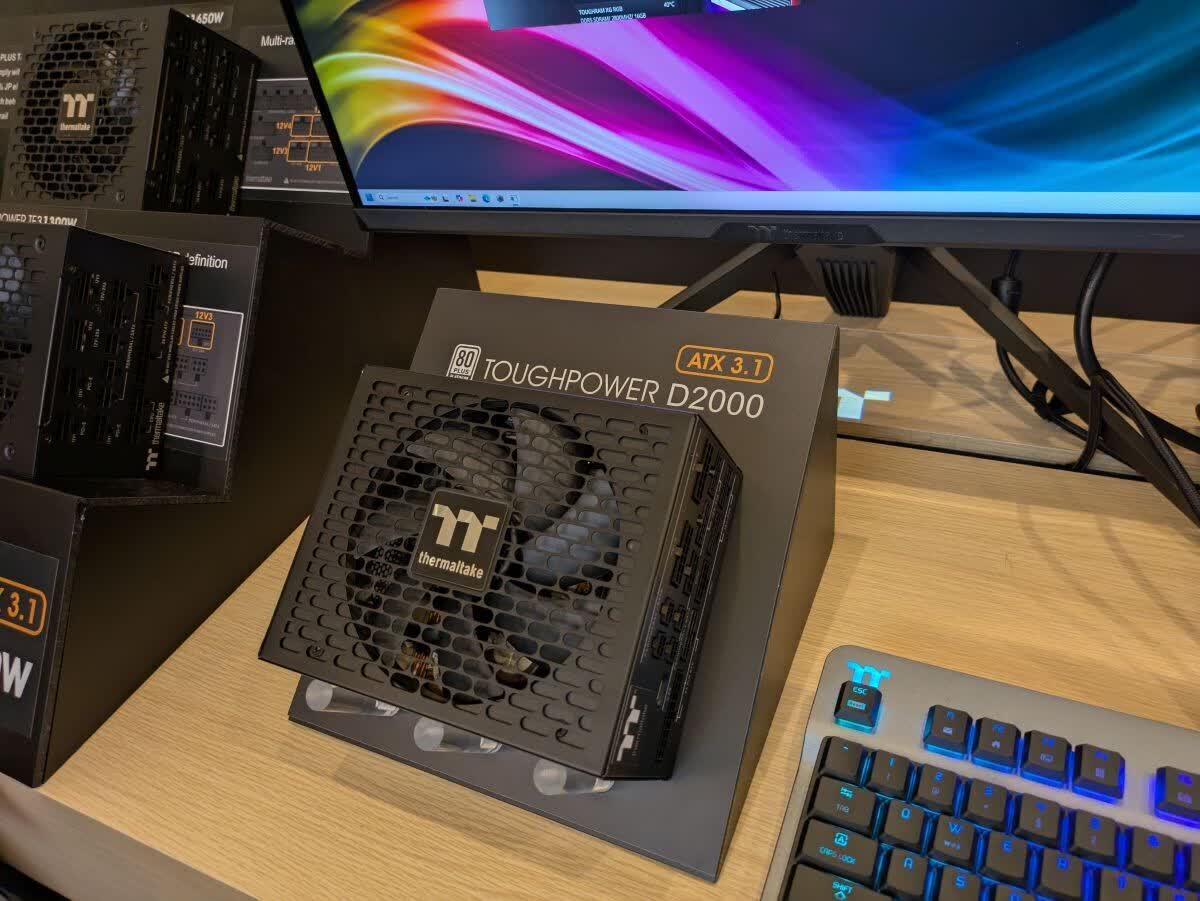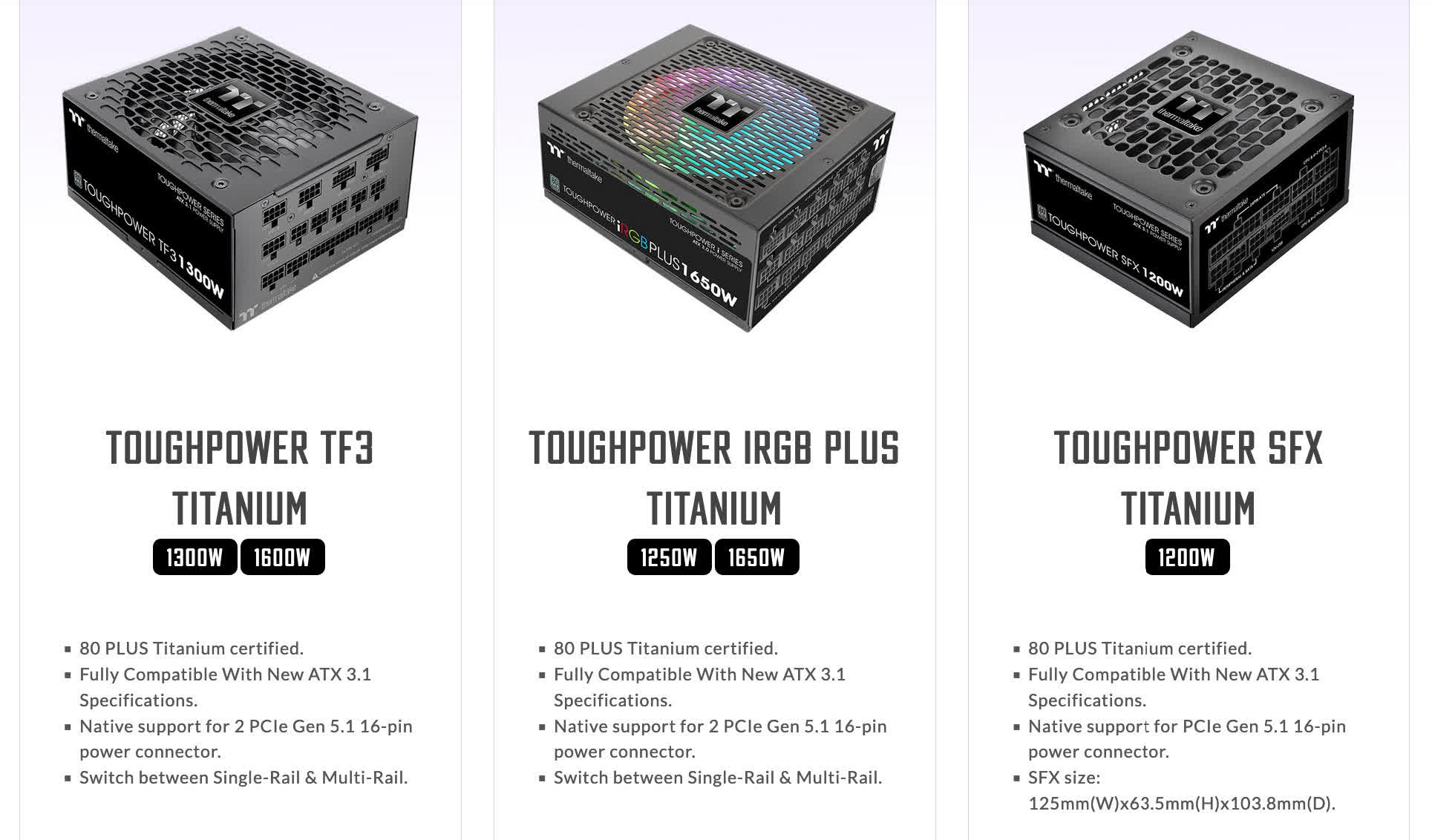In context: PC component manufacturers are gearing up for the next generation of ultra-powerful GPUs and CPUs from Nvidia, AMD, and Intel. And one area that's seeing a major boost is power supplies. The latest graphics cards and processors are growing hungrier than ever, so PSU makers are stepping up their game.
Thermaltake is leading the charge with some incredibly powerful units in terms of wattage. Among their latest offerings is the Toughpower D2000, a monstrous 2000W power supply. To put that in perspective, it's enough power to run an air conditioner.
However, there's a catch with this PSU – it won't be available in the United States. The reason is both practical and amusing: a Thermaltake spokesperson told PC Gamer that the D2000 simply draws too much power for a standard American home outlet.
So unless you have an industrial-grade power setup, you'll have to settle for Thermaltake's other high-wattage options, such as their 1650W or 1600W models – which, let's be real, are still immensely overpowered for virtually any consumer PC build out there.
The D2000, on the other hand, will be heading to Europe and select other regions where home outlets can handle its immense power requirements.
For U.S. customers, the 1650W and 1600W models will be part of Thermaltake's refreshed Toughpower RGB Plus Titanium and Toughpower TF3 Titanium lineups, which debuted at CES 2025. These PSUs are fully modular and feature a sleek, minimalist design – unless you opt for the RGB lighting, in which case you can expect vibrant, customizable lighting effects.
The connector options on these models are extensive. Both the 1650W RGB Plus Titanium and 1600W TF3 Titanium include multiple SATA power connectors, PCIe 5.1 support with 16-pin GPU power ports, and compliance with the ATX 3.1 standard.
In terms of efficiency, all models come with 80 PLUS Titanium certifications and include advanced features such as the ability to switch between single-rail and multi-rail power configurations. The RGB Plus models also come with customizable lighting effects for those who want their builds to shine.
For more compact systems, Thermaltake offers the Toughpower SFX Titanium 1200W PSU, which delivers an impressive power-to-size ratio. Measuring just 125mm x 63.5mm x 103.8mm, this compact unit supports PCIe Gen 5.1, making it an excellent choice for small-form-factor builds.
Image credit: TechPowerUp
Thermaltake unveils massive 2000W PSU, but it's too powerful for U.S. outlets



